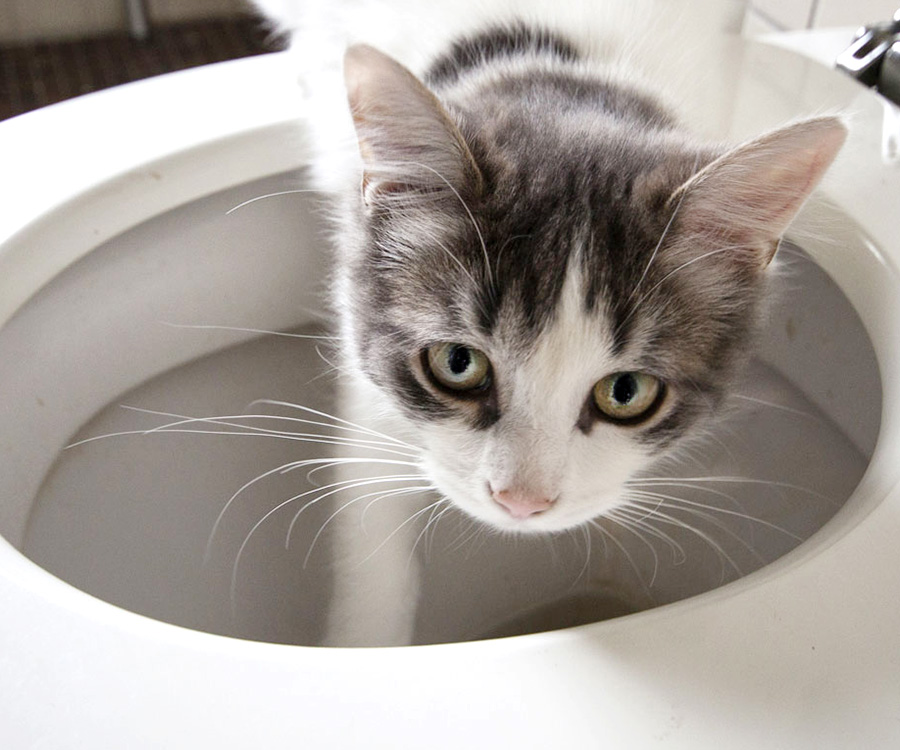This post down below relating to Don’t flush cat feces down the toilet is indeed informative. Don't overlook it.

Introduction
As pet cat proprietors, it's vital to be mindful of exactly how we deal with our feline good friends' waste. While it might appear convenient to purge feline poop down the commode, this technique can have damaging repercussions for both the environment and human wellness.
Environmental Impact
Flushing cat poop introduces dangerous virus and parasites into the water, presenting a significant danger to aquatic environments. These contaminants can negatively impact marine life and compromise water top quality.
Health and wellness Risks
In addition to ecological issues, purging cat waste can also position health and wellness risks to human beings. Feline feces might have Toxoplasma gondii, a parasite that can trigger toxoplasmosis-- a potentially severe ailment, especially for expectant females and individuals with weakened body immune systems.
Alternatives to Flushing
Thankfully, there are more secure and a lot more liable ways to get rid of cat poop. Take into consideration the complying with alternatives:
1. Scoop and Dispose in Trash
One of the most typical technique of throwing away feline poop is to scoop it into a naturally degradable bag and toss it in the trash. Make certain to use a devoted clutter inside story and take care of the waste without delay.
2. Usage Biodegradable Litter
Opt for biodegradable pet cat litter made from materials such as corn or wheat. These clutters are eco-friendly and can be safely taken care of in the garbage.
3. Hide in the Yard
If you have a yard, take into consideration hiding feline waste in an assigned location far from veggie yards and water sources. Make sure to dig deep sufficient to avoid contamination of groundwater.
4. Install a Pet Waste Disposal System
Purchase a family pet garbage disposal system especially created for pet cat waste. These systems utilize enzymes to break down the waste, decreasing odor and environmental impact.
Conclusion
Responsible pet dog ownership extends beyond providing food and sanctuary-- it also entails proper waste monitoring. By refraining from flushing cat poop down the bathroom and going with alternate disposal techniques, we can lessen our environmental footprint and safeguard human health.
Why Can’t I Flush Cat Poop?
It Spreads a Parasite
Cats are frequently infected with a parasite called toxoplasma gondii. The parasite causes an infection called toxoplasmosis. It is usually harmless to cats. The parasite only uses cat poop as a host for its eggs. Otherwise, the cat’s immune system usually keeps the infection at low enough levels to maintain its own health. But it does not stop the develop of eggs. These eggs are tiny and surprisingly tough. They may survive for a year before they begin to grow. But that’s the problem.
Our wastewater system is not designed to deal with toxoplasmosis eggs. Instead, most eggs will flush from your toilet into sewers and wastewater management plants. After the sewage is treated for many other harmful things in it, it is typically released into local rivers, lakes, or oceans. Here, the toxoplasmosis eggs can find new hosts, including starfish, crabs, otters, and many other wildlife. For many, this is a significant risk to their health. Toxoplasmosis can also end up infecting water sources that are important for agriculture, which means our deer, pigs, and sheep can get infected too.
Is There Risk to Humans?
There can be a risk to human life from flushing cat poop down the toilet. If you do so, the parasites from your cat’s poop can end up in shellfish, game animals, or livestock. If this meat is then served raw or undercooked, the people who eat it can get sick.
In fact, according to the CDC, 40 million people in the United States are infected with toxoplasma gondii. They get it from exposure to infected seafood, or from some kind of cat poop contamination, like drinking from a stream that is contaminated or touching anything that has come into contact with cat poop. That includes just cleaning a cat litter box.
Most people who get infected with these parasites will not develop any symptoms. However, for pregnant women or for those with compromised immune systems, the parasite can cause severe health problems.
How to Handle Cat Poop
The best way to handle cat poop is actually to clean the box more often. The eggs that the parasite sheds will not become active until one to five days after the cat poops. That means that if you clean daily, you’re much less likely to come into direct contact with infectious eggs.
That said, always dispose of cat poop in the garbage and not down the toilet. Wash your hands before and after you clean the litter box, and bring the bag of poop right outside to your garbage bins.
https://trenchlesssolutionsusa.com/why-cant-i-flush-cat-poop/

I'm very interested by Don’t flush cat feces down the toilet and I really hope you appreciated the new entry. Enjoyed our review? Please share it. Let other people check it out. Thanks so much for going through it.
Free Estimates